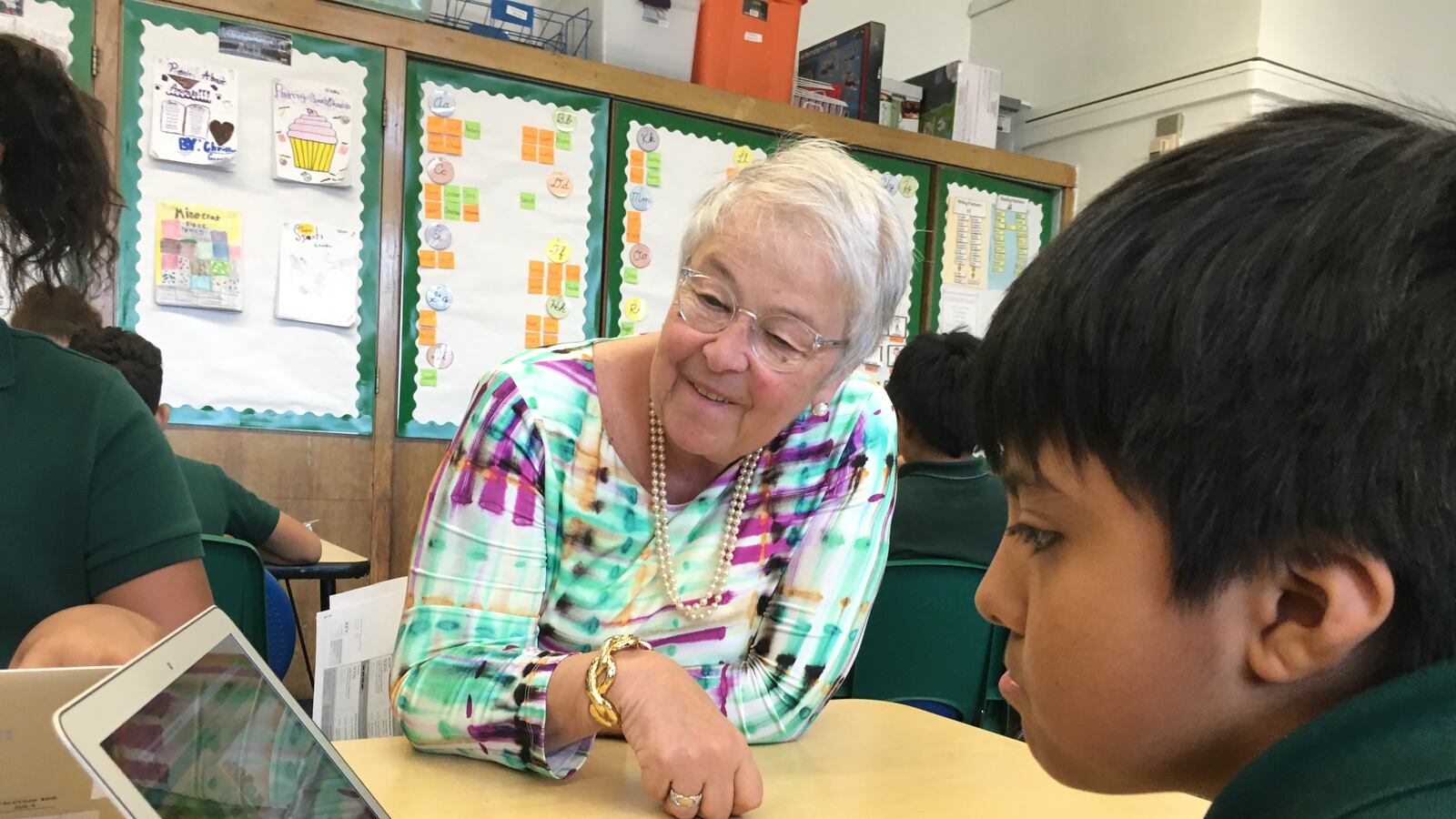New York City’s plan to give all students access to computer science education will expand by 207 schools next academic year, and for the first time will include elementary schools, officials said Wednesday.
That means at least 232 schools across all five boroughs will provide some computer science, including 67 schools that will offer new computer science classes and programs. The rest will get “intensive” training designed to help teachers incorporate smaller-scale lessons at their schools.
“The workforce of today needs people who are problem solvers, analytical thinkers, work well with others, and create new things that we haven’t even begun to imagine,” schools Chancellor Carmen Fariña said at Brooklyn Arbor Elementary School, one of the schools participating in the city’s computer science initiative.
Of the schools that will provide computer science programming for the first time next school year, 34 will offer AP Computer Science Principles, a one-year high school course, and 22 will offer the Software Engineering Program, a multi-year sequence of classes for middle and high school students.
Eleven schools will participate in a new pilot program announced Wednesday that will create a “junior” version of the Software Engineering Program for elementary schools in which computer science topics are taught at each grade level. And another 153 schools will have teachers participate in a six-day training course, called STEM Institute CS Track, to help teachers incorporate computer science in their school’s curriculum.
The number of new programs is in line with the city’s previous projections. In January, the city announced that it expected at least 50 schools would offer the more intensive computer science programs, and asked schools to apply for them. Wednesday’s announcement is the latest step in Mayor Bill de Blasio’s “Computer Science for All” program designed to give all of the city’s 1.1 million public school students access to computer science education by 2025.
To achieve that ambitious goal, the city will have to train hundreds of teachers at each grade level, figure out how to give schools tools to develop those programs, and even overcome basic barriers such as lack of equipment or internet access. Education officials said that 360 teachers of subjects ranging from science to art are getting “rigorous” and ongoing training, including summer sessions.
The program isn’t without its critics, though, some of whom argue that training non-specialists to teach computer science with a few professional development sessions is the same as giving a math teacher a crash course in history and expecting them to teach it well.
For her part, Fariña said the training will be responsive to teachers’ needs and won’t focus on rote explanations of what computer science is.
“This is not about coming in and getting a book and [filling] in the blanks,” she said. “It’s about what do you want to learn? What are the conditions in your classroom? And what do you need to change in your classroom to make yourself a teacher of computer science?”
Fariña also touted computer science programs as a way for schools to brand themselves as innovative, and also said schools that wanted to participate in the intensive programs had to come up with plans to include women, black, and Hispanic students.
“We want to be sure there’s a diverse workforce both by gender and by ethnicity,” she said. “This gives us the opportunity to bring the real world into the classroom in a way that’s exciting.”

